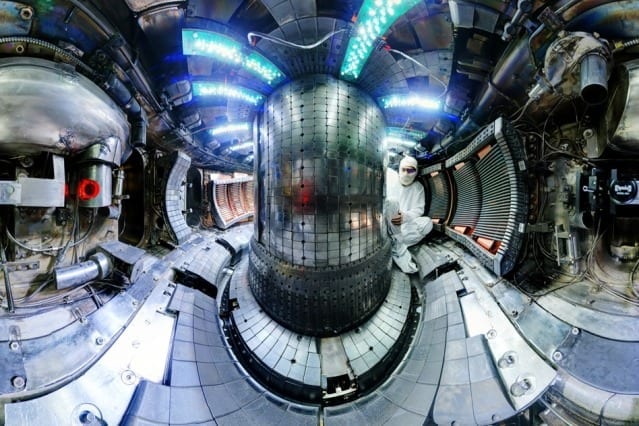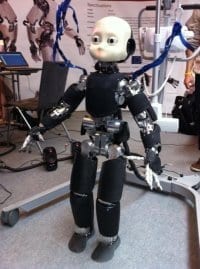
Not Quite Yet, but in the Journal “Physics of Plasmas,” Researchers from National Ignition Facility Show Just How Close We’ve Come
The dream of igniting a self-sustained fusion reaction with high yields of energy, a feat likened to creating a miniature star on Earth, is getting closer to becoming reality, according the authors of a new review article in the journal Physics of Plasmas.
Researchers at the National Ignition Facility (NIF) engaged in a collaborative project led by the Department of Energy’s Lawrence Livermore National Laboratory, report that while there is at least one significant obstacle to overcome before achieving the highly stable, precisely directed implosion required for ignition, they have met many of the demanding challenges leading up to that goal since experiments began in 2010.
The project is a multi-institutional effort including partners from the University of Rochester’s Laboratory for Laser Energetics, General Atomics, Los Alamos National Laboratory, Sandia National Laboratory, and the Massachusetts Institute of Technology.
To reach ignition (defined as the point at which the fusion reaction produces more energy than is needed to initiate it), the NIF focuses 192 laser beams simultaneously in billionth-of-a-second pulses inside a cryogenically cooled hohlraum (from the German word for “hollow room”), a hollow cylinder the size of a pencil eraser. Within the hohlraum is a ball-bearing-size capsule containing two hydrogen isotopes, deuterium and tritium (D-T). The unified lasers deliver 1.8 megajoules of energy and 500 terawatts of power—1,000 times more than the United States uses at any one moment—to the hohlraum creating an “X-ray oven” which implodes the D-T capsule to temperatures and pressures similar to those found at the center of the sun.
“What we want to do is use the X-rays to blast away the outer layer of the capsule in a very controlled manner, so that the D-T pellet is compressed to just the right conditions to initiate the fusion reaction,” explained John Edwards, NIF associate director for inertial confinement fusion and high-energy-density science. “In our new review article, we report that the NIF has met many of the requirements believed necessary to achieve ignition—sufficient X-ray intensity in the hohlraum, accurate energy delivery to the target and desired levels of compression—but that at least one major hurdle remains to be overcome, the premature breaking apart of the capsule.”
The Latest Bing News on:
Fusion energy
- A Tungsten Miracle Happened in the Heart of a Fusion Reactoron May 9, 2024 at 7:07 am
The sun-mimicking technology known as nuclear fusion hopes to create “limitless” energy by smashing light nuclei together using immense heat, but containing such hot plasma is proving tricky. A tokamak reactor in France called WEST recently upgraded from a carbon interior to one made of tungsten and successfully contained plasma at 50 million degrees Celsius for six minutes at higher energies and densities than ever before.
- Breakthrough in Nuclear Fusion: Startup Achieves Sun-Core Temperatureson May 8, 2024 at 8:07 am
A nuclear fusion startup has made significant strides by generating temperatures hotter than the Sun’s core, paving a new pathway toward limitless clean energy. The company, Zap Energy, has achieved electron temperatures ranging from 11 to 37 million degrees Celsius,
The Latest Google Headlines on:
Fusion energy
[google_news title=”” keyword=”fusion energy” num_posts=”10″ blurb_length=”0″ show_thumb=”left”]
The Latest Bing News on:
Fusion power
- World’s Biggest Nuclear-Fusion Project Plans to Reset Without UKon May 8, 2024 at 7:38 am
The world’s biggest fusion-energy experiment is planning a reboot without one of its most important members, after the UK announced funding for a rival project trying to replicate the sun’s energy on Earth.
- Researchers use superconducting material to make clean fusion energy breakthrough: 'Virtually limitless power production'on May 7, 2024 at 8:52 pm
Scientists at the MIT Plasma Science and Fusion Center reached what university press described as a "major milestone" in the realm of fusion power plants. The breakthrough could "usher in an era of virtually limitless power production," MIT News wrote.
The Latest Google Headlines on:
Fusion power
[google_news title=”” keyword=”fusion power” num_posts=”10″ blurb_length=”0″ show_thumb=”left”]










